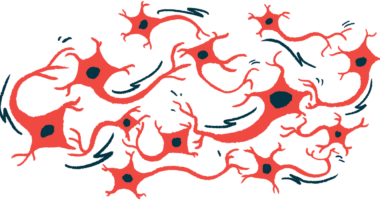
Physical therapy for Huntington’s disease
Last updated June 12, 2025, by Susie Strachan

As a progressive neurodegenerative disease, Huntington’s can make it increasingly harder to control voluntary actions, such as picking up a dropped item, and cause involuntary movements that can affect the arms and legs. This can affect your motor function and make everyday tasks more difficult.
Physical therapy can help you manage the movement changes caused by Huntington’s disease. It can help you move more confidently by focusing on mobility, balance, gait (walking patterns), and general fitness, all of which can support independence in daily activity.
Role of physical therapy in managing Huntington’s disease
For all stages of Huntington’s, a physical therapist can create an exercise program that keeps your joints moving, supports good posture, and reduces the risk of falls. This can also help reduce the impact of chorea, a common symptom of Huntington’s that involves sudden, unpredictable jerking or twisting movements.
Physical therapists can also assess whether other assistive devices might be helpful and suggest movement-based strategies to ease muscle stiffness and discomfort without the need for medication.
Key physical therapy techniques for Huntington’s
Physical therapy exercises can help people with Huntington’s stay active and safe throughout the progression of the disease by focusing on improving strength, gait, balance, flexibility, and cardiovascular fitness.
Your physical therapist can adjust your routine at each stage to maintain mobility and quality of life.
Balance and coordination training
Physical therapists might recommend exercises that improve balance and coordination and reduce the risk of falls.
These exercises include standing on one leg, walking in a straight line, and walking over obstacles. Your therapist may also work with you on tasks that involve multiple steps, engaging physical and cognitive skills to improve coordination.
Physical therapists can also offer strategies to reduce fall risk in and out of the home. These include recommending safer ways to navigate uneven surfaces, wearing proper footwear, and using assistive devices such as walkers, canes, or rollators.
Strength training
Resistance training can help maintain muscle strength, which is important for mobility and overall function. It may also slow down muscle atrophy.
Strengthening and resistance training for Huntington’s may involve using weights or resistance bands, and performing squats, lunges, step-ups, and sit-to-stand movements.
Gait training
Physical therapists might try gait training, which may use auditory, visual, and cognitive cues, to improve walking patterns, make movement more efficient, and reduce the risk of falls in people living with Huntington’s disease.
Gait training for Huntington’s disease also addresses involuntary movements or rigidity that may affect your walking. Your therapist may focus on strategies that help you walk more effectively, such as breaking down the movement into smaller, more manageable steps.
Flexibility and stretching exercises
Stretching routines help maintain joint flexibility and muscles’ ability to lengthen over joints to alleviate stiffness and improve range of motion. These routines can usually be done at home through a home exercise program created by your physical therapist.
Aerobic exercise
To improve cardiovascular health, aerobic exercises, such as walking, stationary cycling, or swimming, are often recommended for people with Huntington’s.
Aerobic exercises can also help reduce fatigue, improve stamina, and make staying active easier.
Adaptive strategies for advanced stages of Huntington’s
As Huntington’s progresses, you may notice changes in posture, additional mobility issues, and breathing and swallowing difficulties, which can increase the risk of falls and aspiration pneumonia, an infection caused by inhaling food, saliva, or stomach acid into the lungs.
Physical therapy can help you adapt to these changes in the more advanced stages. For example, it can focus on exercises that help maintain range of motion and support good postural alignment.
Chest physical therapy may also be recommended for respiratory issues and to improve your ability to cough, clear the airway, and reduce your risk of aspiration pneumonia.
Eventually, therapy for mobility challenges may involve using assistive devices, such as specialized seating or mobility aids, to ensure comfort and safety while seated and strategies for safe movement to prevent falls.
Practical tips for caregivers
Caregivers can help people with Huntington’s disease stay as active and safe as possible by:
- creating a safe environment for physical activity by identifying and removing obstacles or hazards in the home that could increase the risk of falls, such as loose rugs, clutter, or poor lighting
- adding grab bars in bathrooms or using nonslip mats
- establishing a routine by scheduling daily or weekly sessions
- assisting with simple tasks such as walking to the mailbox, completing light housework, or taking short walks
- adjusting for disease progression by simplifying movements, breaking them down into smaller steps, or guiding the person through exercises.
Taking a multidisciplinary approach
Caregivers are just one part of a larger team dedicated to helping people with Huntington’s.
Physical therapy can work in tandem with occupational therapy and speech therapy to provide comprehensive support.
Occupational therapists help people maintain independence by teaching strategies for daily tasks such as dressing, cooking, and household chores. They can also suggest certain home modifications for greater safety.
Speech therapy assists with communication difficulties, as Huntington’s can affect speech and swallowing. Speech therapists can work with you to improve speech clarity, develop better communication strategies, and help with swallowing difficulties to prevent choking or aspiration.
Huntington’s Disease News is strictly a news and information website about the disease. It does not provide medical advice, diagnosis, or treatment. This content is not intended to be a substitute for professional medical advice, diagnosis, or treatment. Always seek the advice of your physician or other qualified health provider with any questions you may have regarding a medical condition. Never disregard professional medical advice or delay in seeking it because of something you have read on this website.
Recent Posts
- Faulty cellular waste disposal system may drive Huntington’s: Study
- What the holidays mean when living with Huntington’s disease
- $12M grant will back first trial of stem cell therapy for Huntington’s
- A tribute to the kindness of strangers in life with Huntington’s
- How to support someone who is planning for future care
- Antipsychotics improve functional capacity, independence in HD
- Despite dwindling resources, hope endures among researchers
- The ‘invisible’ symptoms of Huntington’s that people don’t see
- Genetic variant delays Huntington’s onset by up to 23 years: Study
- Watching Huntington’s switch roles in our marriage was jarring



